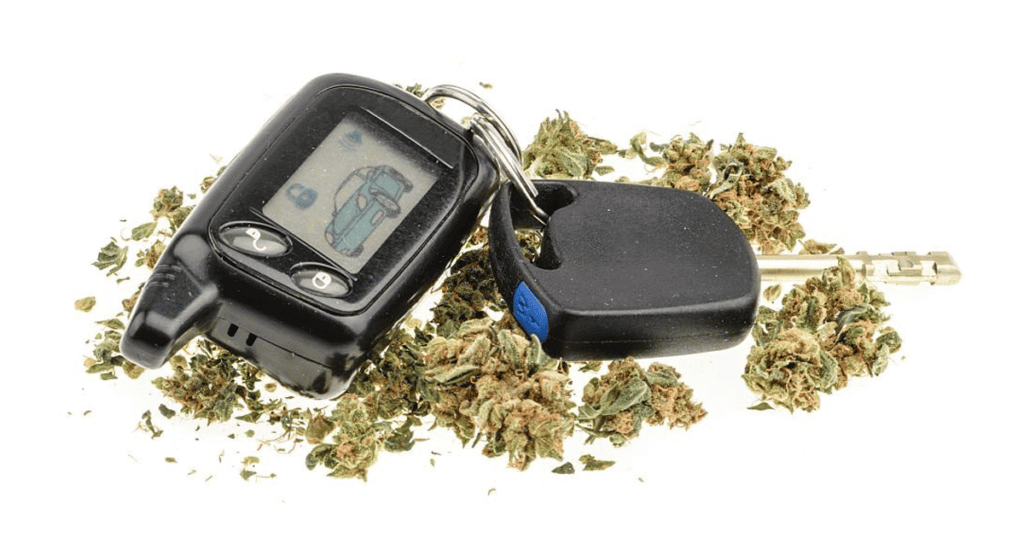Just under 40% of people who consume drugs or alcohol have admitted to driving under the influence – a statistic that certainly underrepresents the actual number. Driving under the influence, while illegal and dangerous, is a regular occurrence in a car-dependent nation like the United States and a valid concern for pedestrians and politicians alike.
However, a new study may be throwing a wrench in anti-cannabis talking points: regular cannabis users may, in fact, be better drivers than the occasional user.
The DL Of DUIs
Driving under the influence is a loose, catch-all term meant to regulate the amount of a given substance one can consume before operating heavy, dangerous machinery like a car. For alcohol, in the United States, your blood alcohol content (BAC) must be under .08 for you to be considered legally sober enough to operate a vehicle. This is a consistent metric used by lawmakers to determine intoxication and doesn’t take into account an individual’s tolerance to the substance at hand. With alcohol, no matter how regularly you drink, your BAC will be consistent. This is because the number on the breathalyzer represents the ratio of alcohol to blood in milliliters – the amount of blood in your body won’t change depending on the amount of drinking you do, so it represents a consistent metric.
Cannabis, however, is much more challenging to measure. You can’t measure how stoned someone is through any sort of metrics like saliva, breath, or even urine content. There have been attempts to create “cannabis breathalyzers” – no doubt police attempts to increase their ticketing revenues – but they’ve failed every scientific and legal test meant to determine their efficacy.
Testing for cannabis intoxication is proving to be tough. While it is possible to notice someone being high, you can’t empirically prove the level of intoxication because cannabis metabolizes differently from alcohol. This is because the more you use cannabis, the fewer endocannabinoid receptors in your brain. This means that the cannabinoids you’re inhaling have fewer places to go, getting consumers less high. If you’ve ever smoked with a seasoned stoner, you may have noticed that they can go through a quarter zip in one sitting with no problem, while a newbie may take one puff and be out for a few hours.

New Data Shakes The Tables
When it comes to legislating things like driving under the influence, frequency of use needs to be considered for this reason. Unfortunately, that hasn’t been the case so far, but a new study could be changing that.
A study published by the National Institute of Health studied healthy adults aged 25-45 with varying cannabis tolerances to “participate in a within-subjects controlled experiment using a car-based driving simulator.” During the baseline phase, participants did a practice drive followed by four driving situations lasting five to ten minutes. The participants then indulged in unlimited, 15-minute sessions of self-produced cannabis flower. They finished four more 5-10 minute situations after 30 minutes. These findings reveal the most significant potential safety issues linked to sporadic users who showed a rise in lane deviations following acute cannabis use. Individuals in the daily usage group slowed down, maybe as a means of mitigating the effects of the drugs.
A group of economists from Temple University and the Universities of Arkansas and Eastern Kentucky also discovered that states having legal cannabis had lower insurance costs and better conditions for road transportation.
“We estimate that legalizing medical cannabis reduces annual auto insurance premiums by $22 per household, a reduction of 1.7 percent for the average household,” experts wrote in the study. “Extending our results to other states, we find that medical cannabis legalization has reduced auto insurance premiums by $1.5 billion in all states that have currently legalized, with the potential to reduce premiums by an additional $900 million if the remaining states were to legalize.”

The numbers, though rudimentary, seem to indicate that regular cannabis use is not as dangerous as reefer-madness era propaganda seems to conclude. Though we do not advocate for driving under the influence, we do advocate for comprehensive legislation, accurate data, and fair policy that reflects the true nature of cannabis, not antiquated anti-weed bs.
Enjoyed that first hit? Come chill with us every week at the Friday Sesh for a freshly packed bowl of the week’s best cannabis news!
















